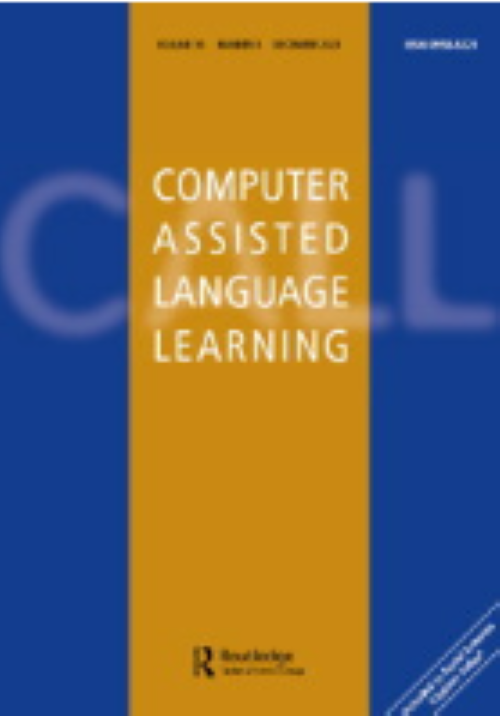Technology-mediated teaching vocabulary: exploring EFL learners’ depth and breadth of lexical knowledge
IF 6.6
1区 文学
Q1 EDUCATION & EDUCATIONAL RESEARCH
引用次数: 0
Abstract
AbstractDrawing on Mayer’s Cognitive Theory of Multimedia Learning, the present study aims to examine the effectiveness of technology-mediated teaching vocabulary in the form of multimedia glosses on EFL learners’ depth and breadth of lexical knowledge. The study was conducted with 91 male and female undergraduate students at a lower-intermediate level of English proficiency in Iran. Participants of the study were randomly assigned into two-variable group contrasts, experimental (text + visual) and control (text-only) groups. They attended 16 reading sessions once a week during which the experimental group practiced computerized reading texts with pop-up text and picture glosses and the control group practiced reading similar texts with pop-up text only. The relative efficacy of teaching activities in vocabulary learning was assessed by using the Word Associates Test for measuring lexical depth and the Updated Vocabulary Levels Test for measuring the lexical breadth before and after the intervention program. To scrutinize the data, ANCOVA and t-test have been done. Results of ANCOVA revealed that the experimental group outperformed the control group in both tests, and the result of the t-test specified that participants kept the scores in the Vocabulary Levels Test significantly higher than the Word Associates Test in the outperforming group. This means that using multimedia glosses in teaching vocabulary has a significant effect on improving both the breadth and depth of lexical knowledge of EFL learners. However, the effect is more significant on breadth than depth of lexical knowledge. The study by analyzing separate measurements of the breadth and depth of vocabulary knowledge of EFL learners provided original research in vocabulary teaching and learning and offered pedagogical implications for language teaching.Keywords: ESLlanguage teachingmultimedia glossescomputerized textscognitive theory AcknowledgementsThe researcher appreciates all the participants of the study.Authors’ contributionsThis study is a single-author study, and the only contributor is the author herself. The author read and approved the final manuscript.Disclosure statementThe author reports there are no competing interests to declare.Data availability statementThe data that support the findings of this study are available from the author upon request.Additional informationNotes on contributorsMandana Rohollahzadeh EbadiMandana Rohollahzadeh Ebadi is an adjunct assistant professor at the Faculty of Foreign Languages, Islamic Azad University North Tehran Branch, Iran. She earned her PhD in TESL from the University of Malaya, Malaysia. Mandana has more than 15 years of experience in teaching different sub-fields of Applied Linguistics, including Second Language Acquisition/Learning, Theories and Principles, English Language Learning Skills, Testing and Assessment, Discourse and Pragmatics, and Research Methods. Her research interests include technology-based language teaching, CALL, corrective feedback and uptake.技术介导的教学词汇:探索英语学习者词汇知识的深度和广度
摘要本研究以迈耶的多媒体学习认知理论为基础,探讨多媒体词汇教学对英语学习者词汇知识深度和广度的影响。这项研究是在伊朗对91名英语水平较低的男女本科生进行的。研究参与者被随机分配到双变量组对比,实验组(文本+视觉)和对照组(纯文本)组。他们每周参加16次阅读课程,在此期间,实验组练习电脑阅读带有弹出文本和图片注释的文本,对照组练习阅读只有弹出文本的类似文本。采用词汇关联测验测量词汇深度和更新词汇水平测验测量干预前后词汇广度,评估教学活动在词汇学习方面的相对效果。为了仔细检查数据,我们做了ANCOVA和t检验。ANCOVA结果显示,实验组在两项测试中的表现均优于对照组,t检验结果表明,表现优异组的词汇水平测试成绩显著高于表现优异组的单词联想测试成绩。这意味着在词汇教学中使用多媒体词汇表对提高英语学习者词汇知识的广度和深度都有显著的效果。然而,这种影响对词汇知识的广度比对词汇知识的深度更为显著。本研究分析了英语学习者词汇知识的广度和深度,为词汇教与学提供了原创性研究,并为语言教学提供了教学启示。关键词:英语教学多媒体词汇计算机文本认知理论致谢研究者感谢所有研究参与者。作者的贡献本研究为单作者研究,唯一的贡献者是作者本人。作者阅读并批准了最后的手稿。披露声明作者报告无竞争利益需要申报。数据可用性声明支持本研究结果的数据可应要求从作者处获得。作者简介:mandana Rohollahzadeh Ebadi是伊朗伊斯兰阿扎德大学北德黑兰分校外国语学院的兼职助理教授。她在马来西亚马来亚大学获得TESL博士学位。Mandana教授在应用语言学的不同子领域拥有超过15年的教学经验,包括第二语言习得/学习、理论与原理、英语语言学习技巧、测试与评估、语篇与语用学和研究方法。她的研究兴趣包括基于技术的语言教学,CALL,纠正反馈和吸收。
本文章由计算机程序翻译,如有差异,请以英文原文为准。
求助全文
约1分钟内获得全文
求助全文
来源期刊

Computer Assisted Language Learning
Multiple-
CiteScore
18.50
自引率
12.90%
发文量
74
期刊介绍:
Computer Assisted Language Learning (CALL) is an intercontinental and interdisciplinary journal which leads the field in its dedication to all matters associated with the use of computers in language learning (L1 and L2), teaching and testing. It provides a forum to discuss the discoveries in the field and to exchange experience and information about existing techniques. The scope of the journal is intentionally wide-ranging and embraces a multitude of disciplines.
 求助内容:
求助内容: 应助结果提醒方式:
应助结果提醒方式:


